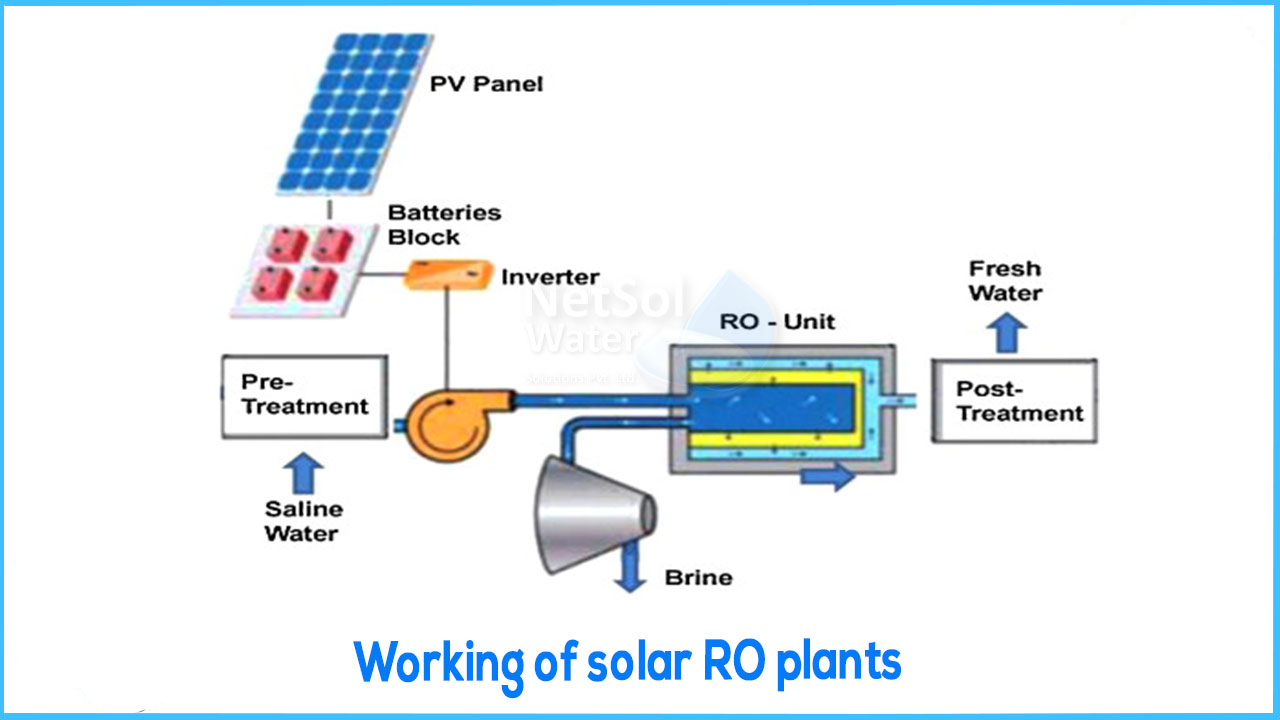How does a solar water purifier work?
In the Indian water purification sector, solar reverse osmosis systems are a new concept. Solar energy is used to power the systems in these water purification systems, which also provide clean water for drinking. Water can be purified from any source using these solar RO water systems. These solar powered systems can bring safe drinking water everywhere you need it, whether it's from a river, pond, or bore well. They're also ideal for military camps, village areas, fairs, and tourist destinations where temporary drinking water is a must at a low cost.
The Components of the Solar RO Power Plant are mainly of two types-
- ~ Solar power supply components
- ~ RO water plant components
Solar Power Supply Components-
- ~ Solar PV modules
- ~ Solar Inverter or VFD
- ~ Charge Controller
- ~ Mounting Structure
- ~ Batteries
- ~ Battery Rack
- ~ Junction Box
- ~ DC and AC Cable
- ~ Required Accessories
RO Water Plant Components
- ~ Membranes
- ~ Membranes Housing
- ~ Raw Water Pump
- ~ High Pressure Pump
- ~ Pressure Tube
- ~ Dosing Pump
- ~ Jumbo Housings
- ~ Jumbo Filters
- ~ Slim Housings
- ~ Slim Filters
- ~ Pressure Vessels
- ~ Multiport Valve
- ~ Flow meters
- ~ Control Panel Box
- ~ Pressure Gauges
- ~ Online TDS Meter
- ~ Ozoniser
- ~ SS Skid
- ~ UV Systems
- ~ SS Tanks
- ~ Resin
- ~ Dosing Chemical
What is a solar microgrid and how does it work?
1. By converting solar radiation into electrical energy, all solar PV panels in the array generate power.
2. The electricity generated by the array of panels is sent to the Power Conditioning Unit, which is a central controller (PCU).
3. The PCU is in charge of controlling, regulating, and directing the electrical energy that is transmitted from the array, as well as supplying electricity directly to homes, businesses, offices, and street lights.
4.During the day, if the electricity generated is not used or if there is extra power, the PCU sends it to the battery bank, which stores it. After then, this energy might be utilised at night (after the sun sets).
For local power usage monitoring, the microgrid and battery bank are connected to a computer. This information can be accessible from a remote location with the installation of a modem, removing the requirement for local people to monitor the system.
Working of Solar RO
The SOLAR RO system is made up of two parts: a power generation unit and a desalination unit. Because the RO unit requires a stable power supply, the system's electricity will be supplied by the solar PV array, and batteries will be linked to provide that power. The PV-generated energy is stored in a battery bank. The loads are powered by the stored energy. On the brine side, the RO desalination process comprises of a high-pressure pump, membrane unit, and pressure control valve.The solution is forced against the membrane by a pump, and water molecules pass through the membrane, reducing the concentration of the solute known as permeate, while the remaining water, which contains high salt concentrations, is rejected as a waste known as brine. The brine side valve is used to manage the amount of brine discharged as well as the system pressure.
Configurations of Solar RO Systems
All instruments and parts are housed in a container, which has a solar electric panel mounted on top or on one side as needed. The biggest advantage of such solar PV systems is that they can operate 24 hours a day, seven days a week without the use of a diesel generator or an expensive power source.




